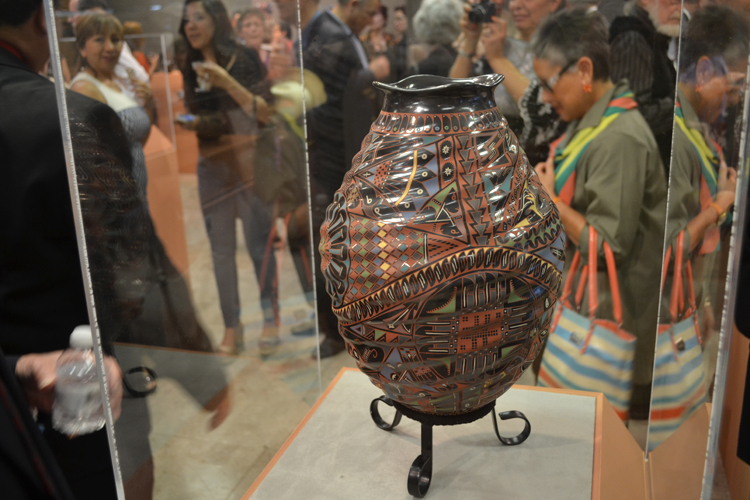EL PASO — Searching all over the northern parts of Mexico in 1976 for the origin of some pottery he found at a second hand store in Deming, NM, Spencer MacCallum came to a town just about three blocks long, on the verge of extinction.
The anthropologist found Juan Quezada, the artisan who made the pots, there in Mata Ortiz, Chihuahua, and together they would help not only revive the town, but the art form as well.
El Paso got a taste of what has been called the miracle of Mata Ortiz when the Consulate General of Mexico here honored MacCallum with the Ohtli Award on May 5 in recognition of his role in helping gain international recognition for the Mata Ortiz artisans and their work. The reception marked the opening of an exhibit of Mata Ortiz pottery at the consulate at 910 E. San Antonio Ave.
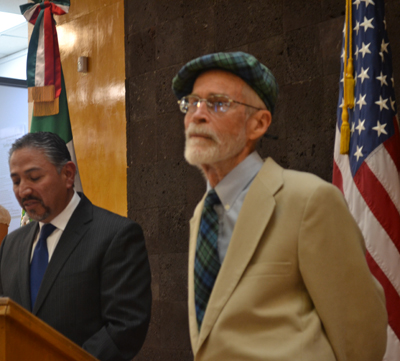
Consul General of Mexico Jacob Prado-Gonzalez, left, reads a few words on why Spencer MacCallum is being honored with Mexico’s Ohtli Award May 5 for his role in helping gain international recognition for Mata Ortiz artisans.
“The Miracle of Mata Ortiz has been something special, enormous, grand. Making the world more beautiful,” MacCallum said. “It would not have been possible without the help of hundreds of people, whom to me are like family.”
MacCallum, who is 84 and now lives in Mata Ortiz, was on hand to receive recognition from the government of Mexico for his work with Quezada and the people of Mata Ortiz, but he spent most of his time giving credit to the man who he said made it all possible.
“This whole miracle of Mata Ortiz began because of the spirit and inspiration of one person – Juan Quezada,” MacCallum said.
While working in the areas surrounding Mata Ortiz, Quezada, born on May 6, 1940, came across and collected prehistoric pots from the Mimbres and Casas Grandes cultures. These artifacts had once been prominent in the area, but had practically disappeared by the year 1400.
With little knowledge of its history and only amateur experience in the art of ceramics, Quezada began experimenting with clay, looking for a way to duplicate his discoveries.
He took into account every detail when it came to recreating the pots. From the ingredients to making the clay, to experimenting with different minerals to get the colors just right and even using human hair for the brushes used to paint the pots.
The time and care Quezada put into this process and still does when creating new pots is what, according to MacCallum, made him and his work unique.
“Juan was not necessarily the first person to attempt making jewelry and figures with clay,” MacCallum said. “But the others just worked to make something they could sell, something practical. Juan made things for the pure joy of making something of excellence.”
Not only did Quezada make artifacts of high quality, he was also able to completely and almost perfectly replicate what the prehistoric artisans of the area were creating more than 600 years before him.
Archaeologist Beth Bagwell, who has explored the areas around Mata Ortiz, found Quezada’s work so authentic that she said she believed it to be of an original. She is one of the many archaeologists who have had to resort to asking Quezada if the artifacts found are original prehistoric relics or one of his imitations.
Bagwell was first brought to Mata Ortiz because of her studies and was in attendance, not just because of the friendship she has developed with MacCallum, Quezada and some of the other families of the town, but because she is simply a fan.
“It’s really exciting to see someone who is inspired by this ancient art. It’s like a jazz musician who gets excited about a riff and then improvises,” Bagwell said. “I really see him as that kind of artist. He saw this classic theme, like you do in music, and then he made his own interpretation.”
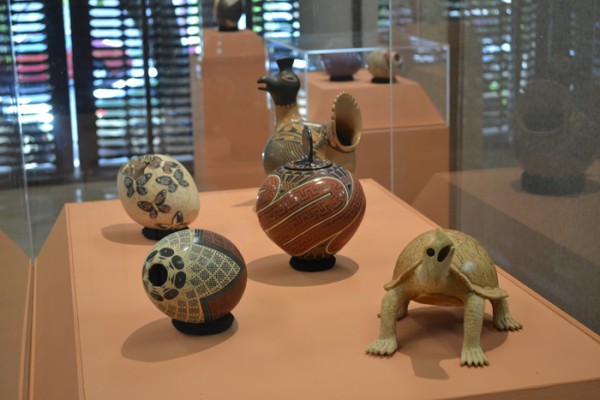
A variety of works from Mata Ortiz artisans are on display at the Consulate General of Mexico office in El Paso. Photos by Luis Gonzalez, Borderzine.com
After teaching his friends and family – and with the help of MacCallum to break into the U.S. market – the town of Mata Ortiz has grown and is thriving. It is estimated that around 300 families in the town now earn all or part of their income from pottery.
The artists range in ages and styles, from children to seniors like Quezada, but even though they each provide their own touch to their craft, the foundation and influence of Quezada are always present.
“These potters have developed their own styles, but they all reflect Quezada’s original interpretation of the Casas Grandes pottery,” said Jacob Prado-Gonzalez, Consul General of Mexico. “Recognized, both men and women, as one of Mexico’s most distinguished talented gifted contemporary artists around the world.”
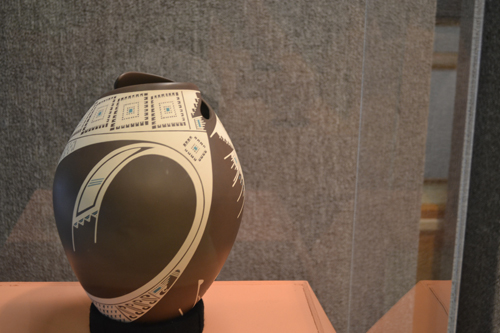 It has been more than 40 years since MacCallum first arrived in Mata Ortiz and the clay pots and other artifacts from the town have been displayed all over the world.
It has been more than 40 years since MacCallum first arrived in Mata Ortiz and the clay pots and other artifacts from the town have been displayed all over the world.
His partnership with Quezada brought back a town and its people from the depths of poverty and has provided them with a much more comfortable life. It provided the people of Mata Ortiz not only with income, but recognition and the opportunities to travel all over the globe.
Claude Smith is a retired ceramics professor from Silver City, New Mexico. He was in attendance and, like Bagwell, has developed a friendship with many from Mata Ortiz during his frequent visits to the town. Like all others in attendance he is an admirer of the work and expects it to only get better.
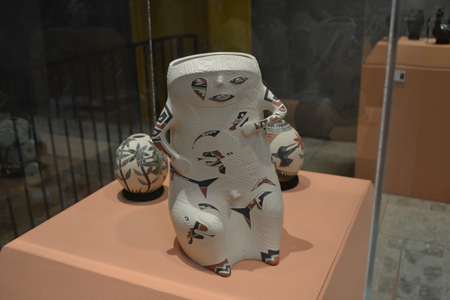 “There have been comments made through the years that they’ve reached their zenith,” Smith said. “That is the furthest thing from the truth. They’re still climbing, Every time I go down I see something new.”
“There have been comments made through the years that they’ve reached their zenith,” Smith said. “That is the furthest thing from the truth. They’re still climbing, Every time I go down I see something new.”
MacCallum agrees and sees a great passion and talent in the people of Mata Ortiz that will keep growing even after Quezada and he are gone.
“Today, Juan isn’t necessarily the best potter of Mata Ortiz. There are various others now who also work at a world-class level,” MacCallum said. “The Japanese, who have traditionally been the best potters in the world, always say that the mark of a great teacher is that of having students who surpass him.”
